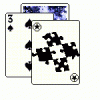Want inconsistencies? no.
Quote:Original post by snak
If you do open one of the doors, you can generate a full room, though it might end up being a closet because other rooms/halls got generated around it. |
Which actually precisely encapsulates what I want to avoid. The idea is to not end up with a bunch of closets. If my algorithm says to itself 'boy it sure would be neat if I could put an armory room that is 13x12 feet here, and fill it with all kinds of goodies, but I only have a 10x10 foot block..' I would like it to be able to say 'looks like I can get away with it anyway without the player noticing, so I'll just put a 13X12 foot room here anyway!' instead of 'guess I'll have to put another broom closet'. The idea is to find design-optimal configurations, and discover a looser set of constraints than total physical correctness around which I can place design-optimal configurations. There will be plenty of design-optimal configurations that I place without violating physical correctness, but in the cases where physical constraints would force me to make decisions that are not design optimal, I would like to know to what extent I can sort of fudge the rules, and get away with it. [Getting away with it being the main goal]. To look for instances in which the constraints that are imposed by physical correctness can be replaced by a looser set of restrictions that would allow me to generate interesting stuff that would not have other wise been generated, while still not totally killing the feel that the world is something that is reasonably real.
The goal that originally prompted the starting of this thread was to discover these looser constraints, and to formalize them in such a way that I can implement my algorithms with them, rather than with strict consideration of 'correct' environments.
To answer the 'map' question, I am not entirely sure about how this would work. Not every game needs a map, and some maps may be limited in the distance they let you see [which would then impose an additional constraint that an inconsistency cannot occur within X distance from an observable point, thus resulting in a map that always looks consistent, with the limited portion of it that you can see at any given time]. This is still very much a nebulous idea in my head, and I haven't started coding at all. I just want to hammer out the details, since it seems like there are some pretty exciting prospects here that I would like to explore if I can figure out how everything should piece together.
Sorry that this whole thread so far has pretty much turned into me repeatedly clarifying my question. Maybe I am just not explaining it correctly. My brain must be stuck in the technical forums....







